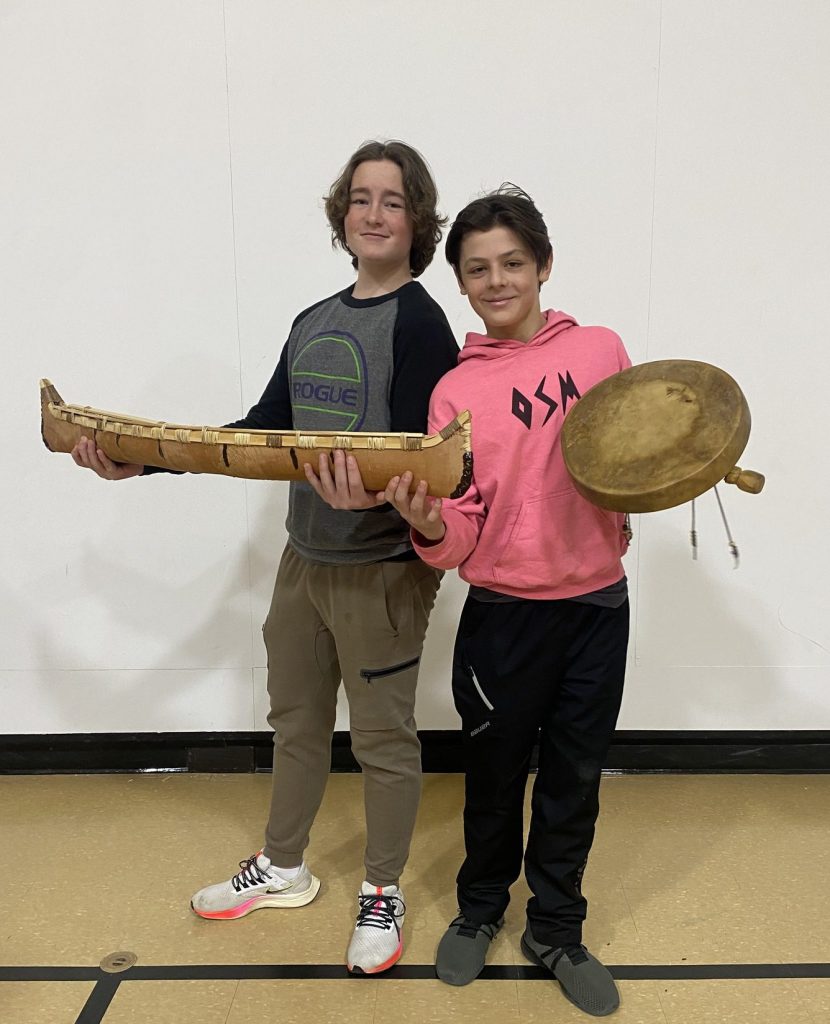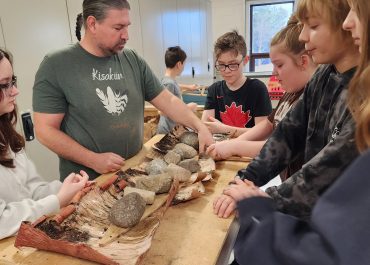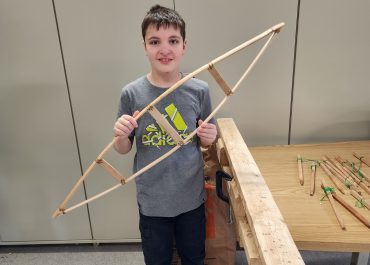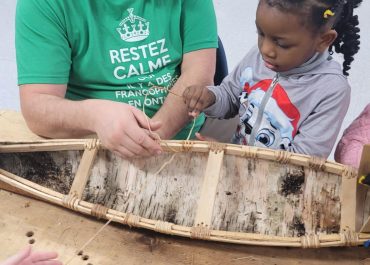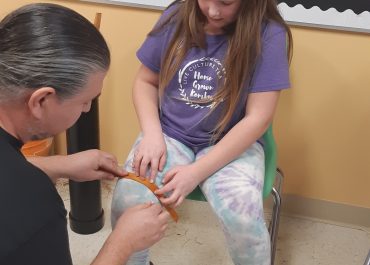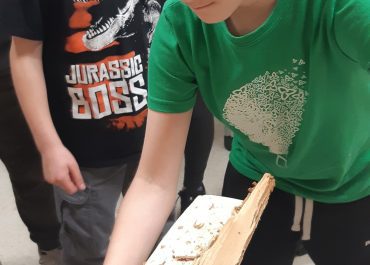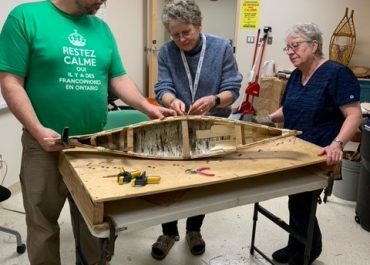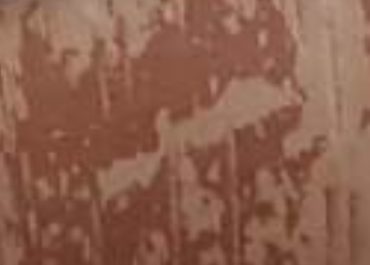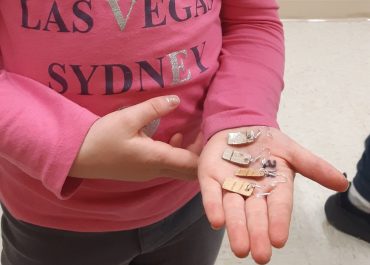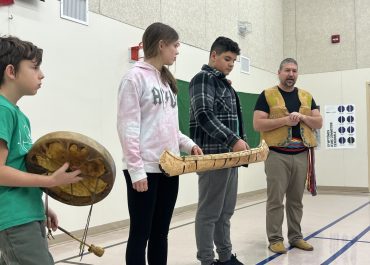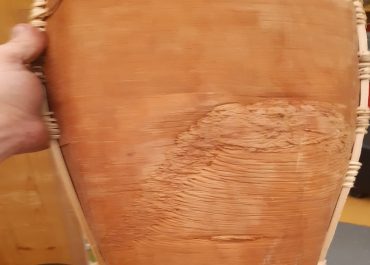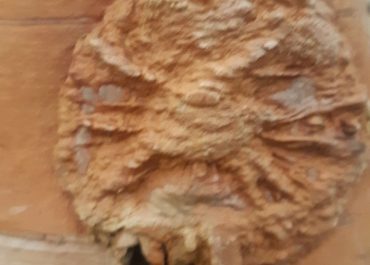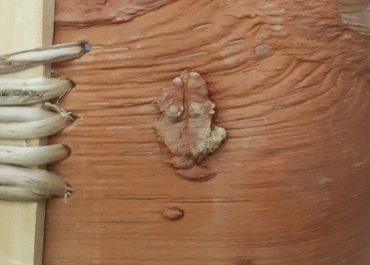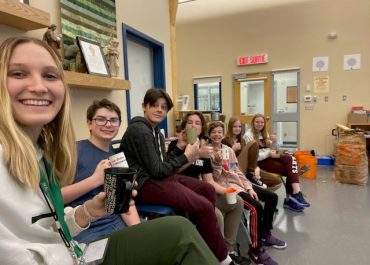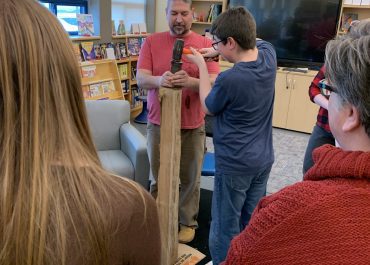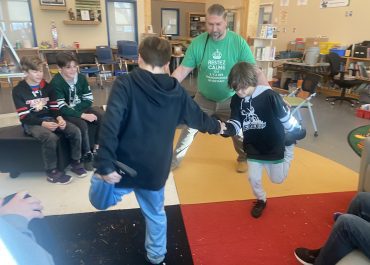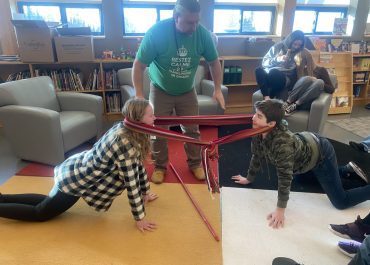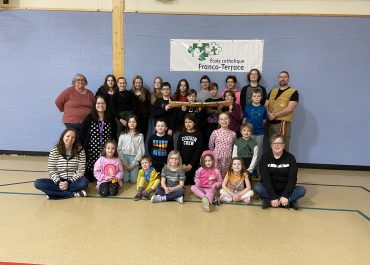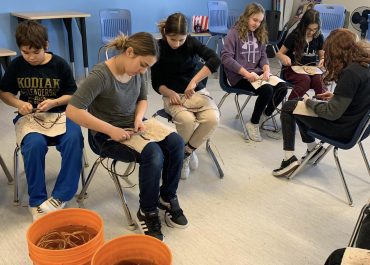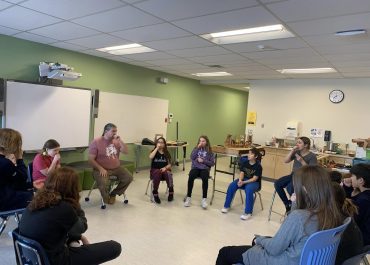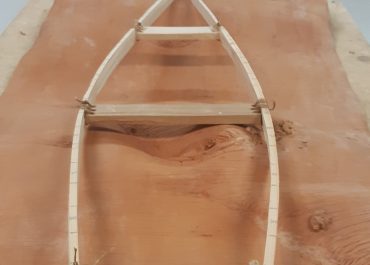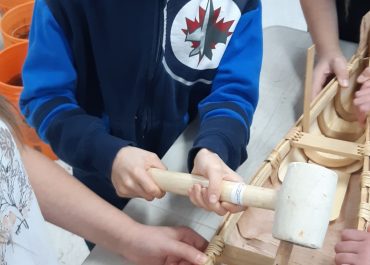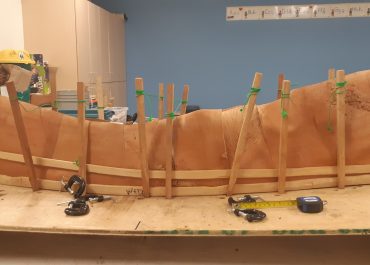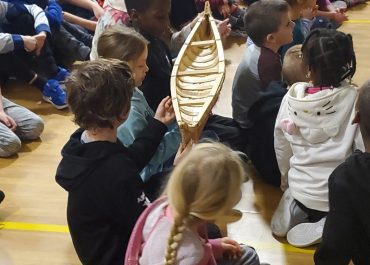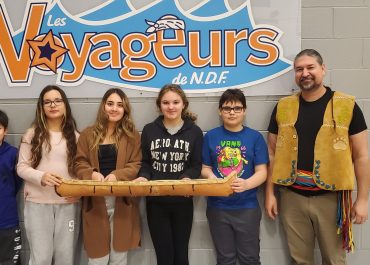In January and February, Christian Pilon set out on an adventure in our region, stopping to meet with four schools. The Franco-Ontarian Métis traveler offered a week-long birchbark canoe-making workshop to students and staff at École catholique Val-des-Bois (Marathon), École Immaculée-Conception (Ignace), École catholique Franco-Terrace (Terrace Bay) and École Notre-Dame-de-Fatima (Longlac).
This enriching experience enabled our students to learn more about Franco-Métis culture, as well as the cultural and educational steps involved in the traditional manufacture of a small authentic birchbark canoe. Students selected the bark, handled the tools, peeled and took roots to attach the bark to the skeleton of the canoe, and laid down rocks to stabilize the bark. During the process, Christian shared canoe-building teachings such as the seven gifts and the medicine wheel.
In addition to building a canoe, students and teachers enjoyed traditional apple cider and cedar tea, native songs, drumming and storytelling. Some had the opportunity to go snowshoeing, learn how to make bark jewelry, and discover Inuit games.
Maamigin Aazhogann
At the canoe unveiling ceremony, École catholique Val-des-Bois chose to name their canoe "Maamigin Aazhogan" (pronounced mah-mi-gin à-chaud-gun), which means "to gather at the bridge".
"During fabrication, two pieces had to be joined to make the outside of the canoe. This represents one of the canoe's bridges," explains Christian Pilon. The other decks were identified and created by reassembling damaged pieces. However, the canoe's name comes more from the image on the canoe's belly, which features round heads and long bodies all in white. As Christian explains, "We are the heads and long bodies. We are the gum." This is where we gather at the bridge. "The bridge allows us to cross and bring together both sides of a shore or relationship."
Waagosh
Pronounced waa-goucheThe word Anishnabe for fox was the choice of name for the canoe at École Immaculée-Conception.
"If you look at the belly of the canoe, you see the white section that represents the tip of the tail and the red forms the rest of the body. We had a visit from waagosh The fox represents the mysterious and the ability to transform and play tricks. "The fox represents the mysterious and the ability to transform and play tricks. It reminds us of the importance of playing, and that's what I saw during my week at Ignace; students and adults alike! The fox is very intelligent and can easily escape from its predators. It's also smart enough to tame humans, rather than the other way around, as is often believed."
Mookam
At École catholique Franco-Terrace, the canoe was named "Mookam" (pronounced mou-came"). Which means rise or lift, "rise"In English, this refers to the action of a person and/or the sun rising.
Christian explains that in the bark, "we see the sun piercing the horizon, and a boat that reminds us of the importance of going out to meet and welcome the sun every morning. We quickly realize this when we have days or weeks at a time without the warmth of the sun to caress our faces. We have to take charge and get up. We get up and face the challenges and celebrations we have every day."
Also on the canoe are a turtle, a spider and a frog.
Gaagaggi
Pronounced gah-gah-géThe name of the École Notre-Dame-de-Fatima canoe means "raven".
"The raven invites us to travel into the void to meet ourselves," explains Christian. "He came along a few times during the project. From the roof of the school, he observed the manufacturing process, sometimes for 45 minutes. The raven is the most intelligent bird in North America," he adds, adding that by observing the canoe carefully, "you can see the solar system and the earth orbiting with the other planets. If you look again, you can see a giant raven in full flight. It's the spirit of creation and renewal."
"The canoe is the gift the First Nations gave the French back then. We traveled together, and created a family together. But, in the course of history, we've grown apart. The Natives are still in the canoe, and the paddle or oar is waiting for you." - Christian Pilon
The canoes will be on display at each school. Come and see them on your next visit to the school.
This learning project was funded by the Ontario Arts Council's Artist-in-Residence program.
